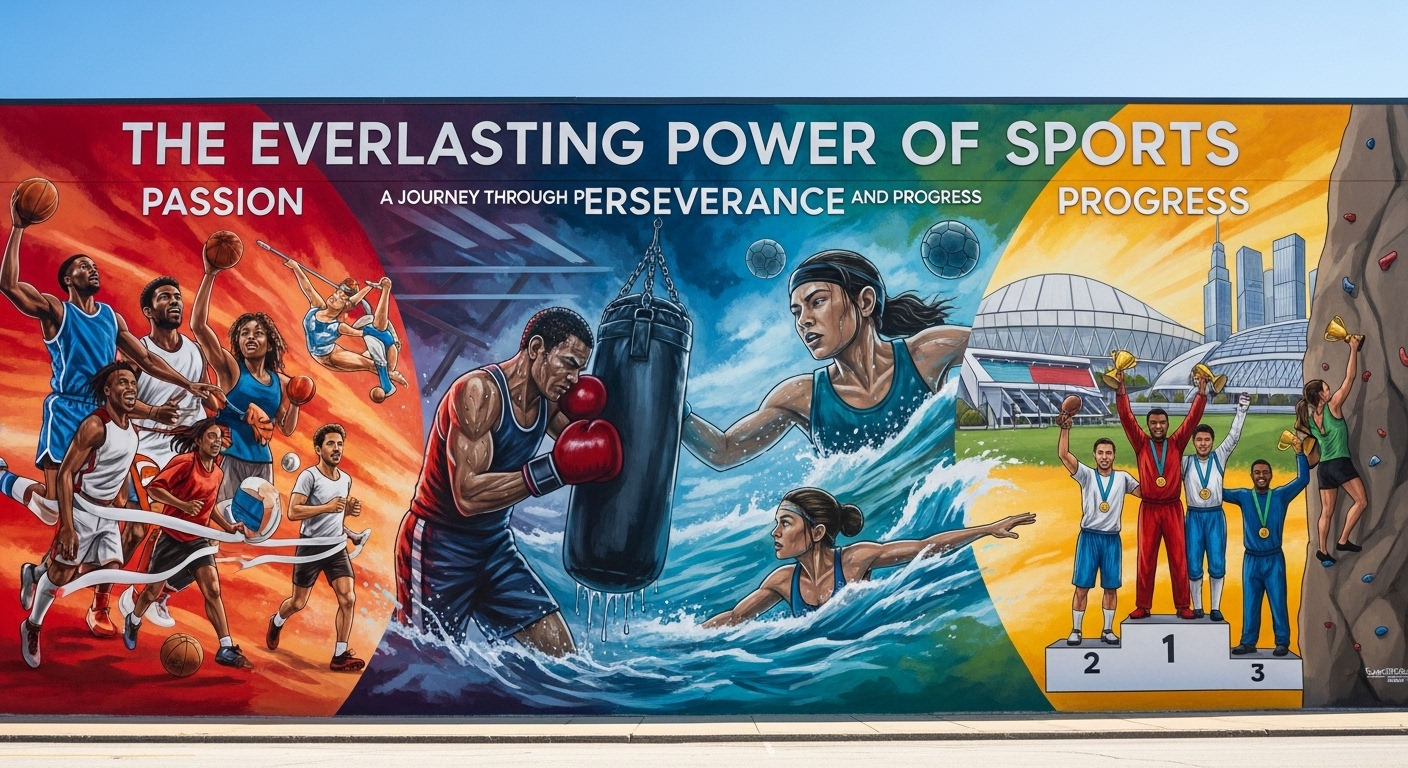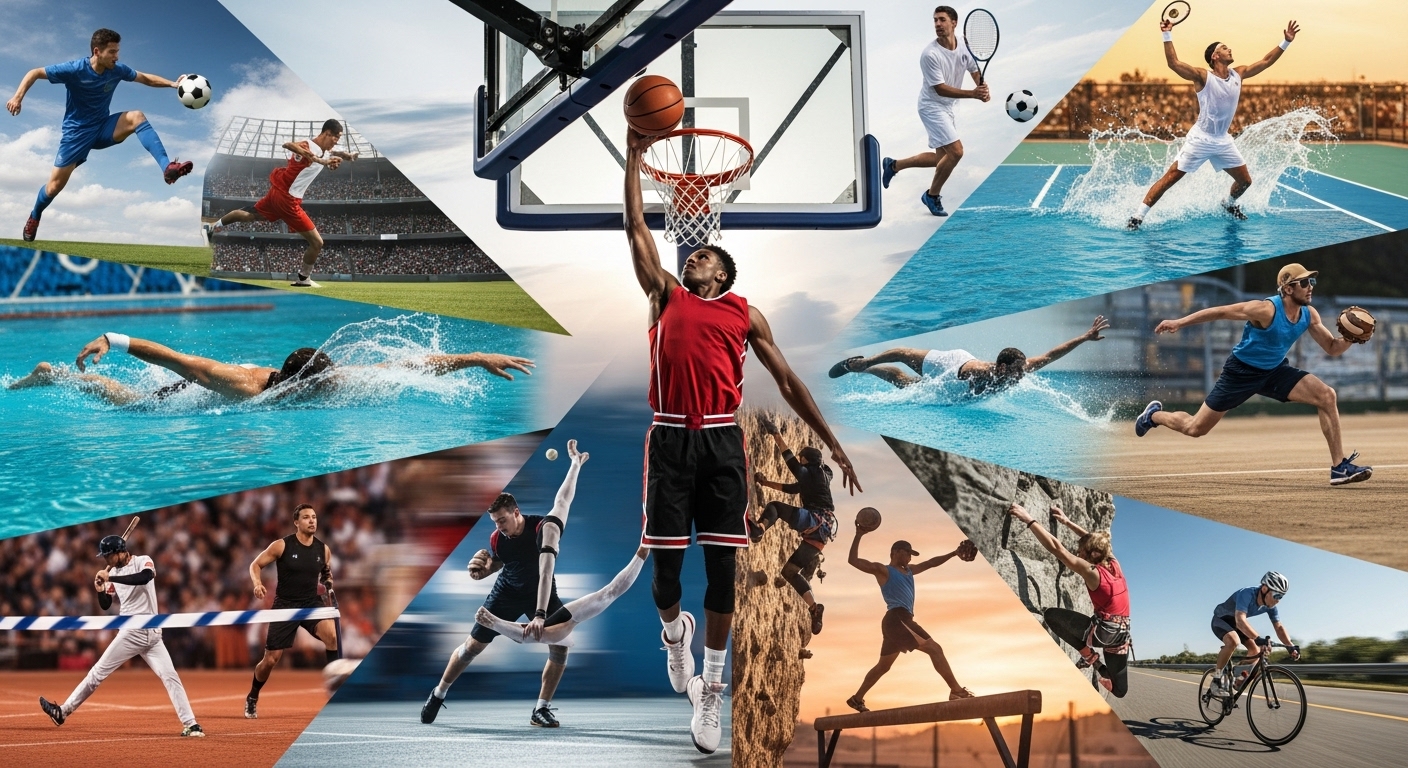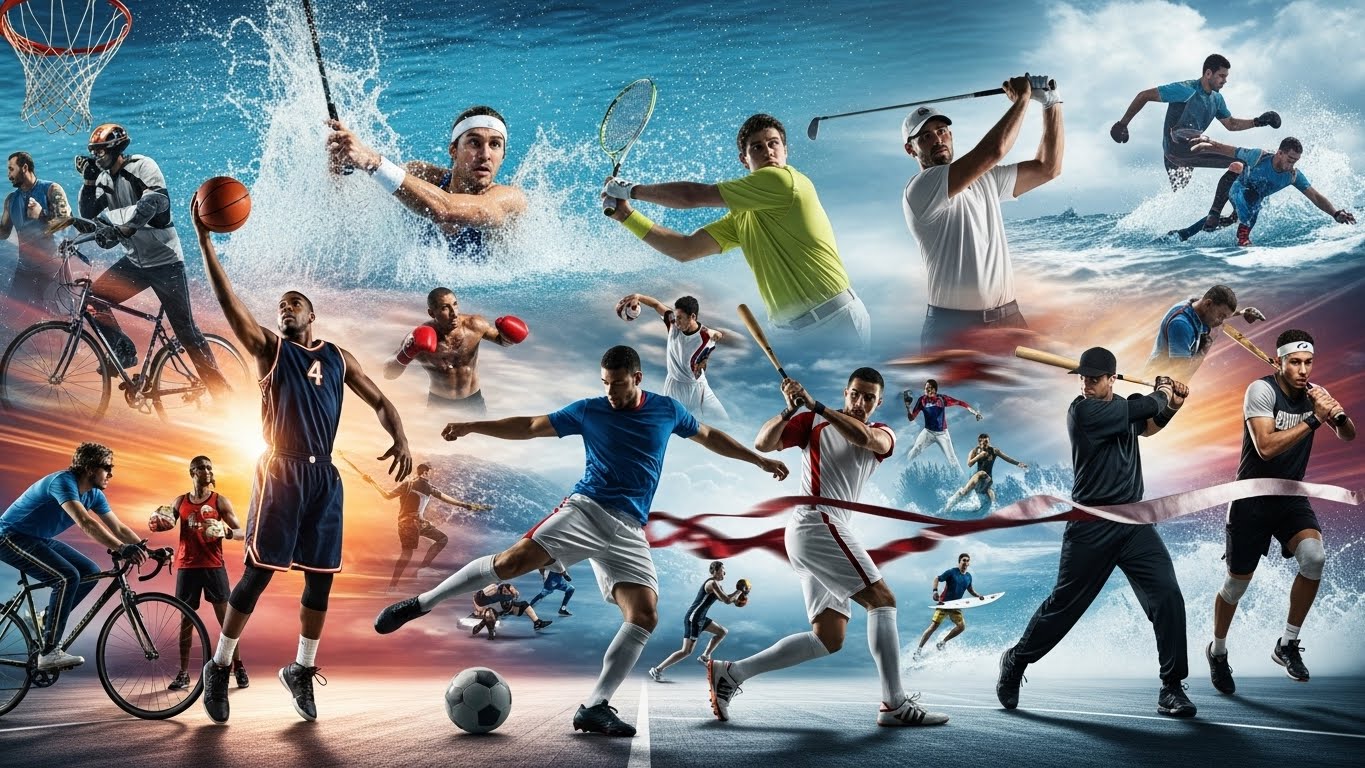Sports have always been more than just games. They are reflections of human endurance, emotion, discipline, and the unending will to achieve greatness. From the dusty fields where children chase makeshift balls to the grand stadiums filled with roaring crowds, sports embody the very essence of humanity’s drive to excel. Whether it is football, cricket, athletics, basketball, tennis, or any other discipline, sports connect people across boundaries, languages, and cultures. In this blog, we will explore the multifaceted world of sports, its impact on individuals and societies, the rise of modern trends, and why the spirit of competition continues to inspire generations.
The Ancient Roots of Sports
The history of sports dates back to ancient civilizations. The Greeks introduced the Olympic Games nearly three thousand years ago, celebrating physical strength, skill, and courage. These events were more than entertainment—they were a means of worship and honor. Athletes trained for years to represent their city-states, and victory was celebrated as a divine accomplishment. Similarly, ancient Egyptians played competitive games like wrestling, swimming, and archery. The Romans, too, had their gladiatorial contests, where strength and bravery were the measure of a man’s worth.
In ancient China, sports were also an integral part of life, with martial arts and early forms of soccer being practiced centuries before the modern era. The ancient Indians introduced kabaddi and chess, combining physical and mental prowess. These traditions laid the groundwork for how we perceive sports today—as a test of both body and mind.
The Global Language of Competition
Sports transcend language, religion, and nationality. A football match between two countries can ignite emotions that words cannot describe. When a player scores a goal, the celebration echoes through millions of hearts across continents. This universality is what makes sports the world’s most powerful connector.
Consider the FIFA World Cup or the Olympic Games—events where people of all nations come together in harmony and competition. Athletes from different backgrounds compete not only for personal glory but also for national pride. For those few moments, the world forgets its divisions. A single race, a single goal, or a single throw can unite billions in shared joy or heartbreak.
Sports also provide a platform for diplomacy. History has witnessed how sporting events have helped bridge political divides and open channels of communication. The famous “Ping Pong Diplomacy” between the United States and China in the 1970s is one such example. Sports can achieve what politics sometimes cannot—mutual respect and understanding.
The Power of Teamwork and Discipline
At the heart of every sport lies teamwork and discipline. Whether it is a football team executing a perfect pass, a relay team synchronizing their speed, or a cricket team strategizing on the field, cooperation is essential. Athletes learn to trust their teammates, to communicate silently through gestures and instincts, and to share victories and defeats alike.
Discipline is the foundation of success in sports. Behind every medal, there are countless hours of training, strict diets, and mental conditioning. An athlete’s journey is filled with sacrifice—early mornings, long practice sessions, and the constant battle against fatigue and doubt. Yet, it is this very discipline that shapes champions. The ability to stay focused despite adversity defines a true sportsman.
Team sports, in particular, teach valuable life lessons. They instill leadership qualities, foster empathy, and enhance problem-solving skills. Every player learns that their individual brilliance matters less than the collective success of the group. This philosophy extends beyond the playing field into workplaces, families, and societies.
The Role of Sports in Education
In schools and universities, sports play a vital role in shaping young minds. Physical education teaches students about fitness, teamwork, and perseverance. Participation in sports improves concentration, builds confidence, and reduces stress. It encourages students to set goals, handle pressure, and manage both victory and defeat gracefully.
Educational institutions around the world now understand the importance of balancing academics with athletics. Students who engage in sports tend to perform better in their studies because they learn time management and develop mental toughness. Moreover, sports offer opportunities for scholarships and professional careers, giving talented youth a pathway to success.
The Emotional and Psychological Impact of Sports
Sports are as much about the mind as they are about the body. The psychological benefits of participation are profound. Playing or even watching sports releases endorphins, the body’s natural mood enhancers. It reduces anxiety, combats depression, and promotes a sense of belonging.
Athletes often speak about entering a state of “flow” where they become fully absorbed in their performance, losing all sense of time and distraction. This level of concentration is not only beneficial in sports but also translates into other areas of life. It teaches individuals how to remain calm under pressure and make quick, effective decisions.
Moreover, sports provide an emotional outlet. They give people a safe space to express joy, frustration, and passion. For fans, supporting their favorite team becomes a ritual that binds communities together. For athletes, every competition becomes a story of courage and resilience.
Sports as a Tool for Social Change
Throughout history, sports have been a platform for social transformation. They challenge stereotypes, promote equality, and amplify marginalized voices. When Jackie Robinson broke the color barrier in Major League Baseball, he not only changed the sport but also made a profound impact on civil rights. Similarly, female athletes like Billie Jean King and Serena Williams have fought tirelessly for gender equality, proving that talent knows no gender.
Paralympic athletes continue to redefine the limits of human potential, proving that physical challenges do not define one’s ability to achieve greatness. Their stories inspire millions to embrace inclusivity and resilience.
Sports also play a crucial role in community development. Local sports clubs and youth programs give children an opportunity to stay active, develop life skills, and stay away from negative influences. They foster unity and pride within communities, providing a positive outlet for energy and creativity.
The Evolution of Modern Sports
With the advent of technology and globalization, sports have undergone a massive transformation. Training techniques have become more scientific, nutrition has been optimized, and data analytics now play a major role in performance improvement.
Virtual reality, wearable devices, and artificial intelligence are being integrated into sports training to monitor every heartbeat, muscle movement, and decision. Coaches can now analyze gameplay in real time, allowing athletes to correct mistakes and enhance their performance instantly.
Broadcasting technology has also changed how fans experience sports. High-definition cameras, instant replays, and global streaming platforms ensure that no moment is missed. Social media has turned athletes into influencers, connecting them directly with their fans and giving them a voice beyond the playing field.
Esports, too, has emerged as a legitimate form of competition, blending gaming with traditional sports structures. Millions of young players now compete in digital arenas, showcasing strategic thinking, reaction speed, and teamwork. This new form of competition has expanded the definition of sports, proving that mental agility is as powerful as physical strength.
The Business of Sports
Sports have evolved into a multi-billion-dollar global industry. From broadcasting rights and sponsorship deals to merchandising and tourism, the economic impact of sports is enormous. Major events like the Olympics, the World Cup, and the Super Bowl generate jobs, boost economies, and drive innovation in infrastructure.
Athletes themselves have become brands, signing lucrative endorsement deals and influencing markets. This commercialization has both positive and negative sides. On one hand, it provides financial stability to athletes and promotes global awareness of sports. On the other hand, it can sometimes overshadow the spirit of fair play and lead to over-commercialization.
Nonetheless, sports management, marketing, and analytics have opened new career paths for millions of professionals worldwide. From event organizers to physiotherapists and statisticians, the sports industry continues to expand and evolve with every passing decade.
Challenges and Controversies in Sports
While sports unite people, they also face significant challenges. Doping scandals, match-fixing, and corruption have occasionally tarnished the purity of competition. These issues threaten the credibility of sports and the trust of fans. Governing bodies continuously work to implement strict regulations and testing systems to maintain fairness.
Gender inequality and pay disparity remain major concerns in many sports. Although progress has been made, female athletes often earn less and receive less media coverage than their male counterparts. Efforts are ongoing to create equal opportunities and recognition for all athletes.
Mental health is another growing topic of discussion in modern sports. The pressure to perform, public scrutiny, and constant competition can take a toll on athletes’ psychological well-being. Awareness campaigns and support systems are being introduced to help athletes manage stress and maintain balance.
The Future of Sports
As we look ahead, the future of sports promises even greater integration of technology, sustainability, and inclusivity. Green stadiums powered by renewable energy, digital fan engagement through virtual reality, and AI-driven analytics will redefine how we play and watch sports.
Sports organizations are focusing on environmental responsibility by reducing carbon footprints and promoting recycling during events. This awareness reflects the broader global movement toward sustainability.
Moreover, inclusivity will continue to shape the landscape of sports. Gender-neutral teams, adaptive sports programs, and international collaborations will make participation accessible to all, regardless of background or ability. The digital era also allows smaller sports and local competitions to reach a global audience, creating more opportunities for recognition and growth.
The Human Element: Beyond Records and Trophies
At its core, sports are about people—their stories, their struggles, and their triumphs. Every athlete represents a journey filled with determination and dreams. Whether it’s a child kicking a ball in a small village or a professional competing on the world stage, the emotions remain the same—the thrill of competition and the joy of improvement.
Sports remind us that winning is not everything. The real victory lies in participation, in giving one’s best, and in learning from every experience. Defeat teaches humility, while victory teaches gratitude. The applause fades, the records get broken, but the lessons of perseverance and teamwork last forever.
Conclusion: The Eternal Spirit of Sports
Sports are not confined to stadiums or scoreboards. They live in the hearts of everyone who dares to dream, to strive, and to overcome. They teach us that limits exist only to be pushed, that unity is stronger than division, and that passion can move mountains.
In every athlete’s story, we see a reflection of ourselves—the desire to rise after every fall, the courage to face challenges, and the belief that effort never goes to waste. Sports are a celebration of humanity, an ongoing testament to our resilience and spirit.
As long as people continue to run, jump, play, and compete, the flame of sports will never fade. It will continue to inspire, to unite, and to remind the world that victory is not just about crossing the finish line—it is about the journey, the discipline, and the heart that keeps moving forward.



